Celebrating a Decade of Science through the JGI-UC Merced Genomics Internship Program
A decade on, the JGI-UC Merced genomics internship has led to groundbreaking science and opportunities to speak on a national level. [Read More]
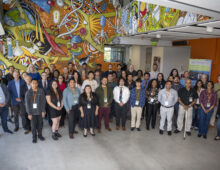 A decade on, the JGI-UC Merced genomics internship has led to groundbreaking science and opportunities to speak on a national level. [Read More]
A decade on, the JGI-UC Merced genomics internship has led to groundbreaking science and opportunities to speak on a national level. [Read More]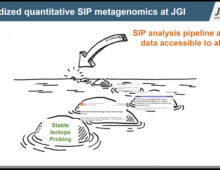 The JGI offers metagenome quantitative stable isotope probing (Metagenome – qSIP) capabilities to investigate metabolic activity of metagenome-assembled genomes (MAGs). [Read More]
The JGI offers metagenome quantitative stable isotope probing (Metagenome – qSIP) capabilities to investigate metabolic activity of metagenome-assembled genomes (MAGs). [Read More] To understand how organisms adapt to extreme environments, Marike Palmer and Brian Hedlund study organisms living in hot springs. Hear how their recent work revealed more about the history of the Chloroflexota phylum and a new way of moving: a tail-like flagella. [Read More]
To understand how organisms adapt to extreme environments, Marike Palmer and Brian Hedlund study organisms living in hot springs. Hear how their recent work revealed more about the history of the Chloroflexota phylum and a new way of moving: a tail-like flagella. [Read More] Natural Prodcast guest Betsy Parkinson from Purdue on bacterial signaling molecules and regulation of biosynthetic pathways, student mental health, and getting kids interested in microbiology. [Read More]
Natural Prodcast guest Betsy Parkinson from Purdue on bacterial signaling molecules and regulation of biosynthetic pathways, student mental health, and getting kids interested in microbiology. [Read More]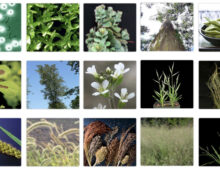 Described in Nucleic Acids, the JGI Plant Gene Atlas is a huge updateable transcriptome resource spanning diverse plant species. [Read More]
Described in Nucleic Acids, the JGI Plant Gene Atlas is a huge updateable transcriptome resource spanning diverse plant species. [Read More]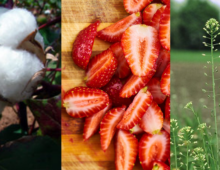 In Nature Communications, a method to correctly identify polyploid subgenomes without needing to know the genomes of their ancestors. [Read More]
In Nature Communications, a method to correctly identify polyploid subgenomes without needing to know the genomes of their ancestors. [Read More] The US Department of Energy’s Office of Science is seeking input on the need and the structure of a unified data framework that links or integrates existing data activities within the Biological and Environmental Research Program (BER). The aim is to gather current and future science questions that require a more integrated data infrastructure for… [Read More]
The US Department of Energy’s Office of Science is seeking input on the need and the structure of a unified data framework that links or integrates existing data activities within the Biological and Environmental Research Program (BER). The aim is to gather current and future science questions that require a more integrated data infrastructure for… [Read More]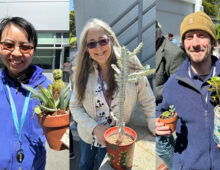 The JGI supports finding solutions to clean energy and environmental challenges, and many JGIers work to connect those big goals with their everyday activities, striving for sustainability in lab and office spaces. [Read More]
The JGI supports finding solutions to clean energy and environmental challenges, and many JGIers work to connect those big goals with their everyday activities, striving for sustainability in lab and office spaces. [Read More] Michelle O’Malley and Tom Lankiewicz of UC Santa Barbara discuss the importance of studying anaerobic fungi, as well as a recent discovery that turns scientific presumption on its head and opens up a new avenue to explore for efficient biofuel production.
[Read More]
Michelle O’Malley and Tom Lankiewicz of UC Santa Barbara discuss the importance of studying anaerobic fungi, as well as a recent discovery that turns scientific presumption on its head and opens up a new avenue to explore for efficient biofuel production.
[Read More] David Hibbett (Clark University) fills us in on the kind of decay that makes shiitake mushrooms special. This week, he 39 collaborators published a paper tracing how these mushrooms have evolved. [Read More]
David Hibbett (Clark University) fills us in on the kind of decay that makes shiitake mushrooms special. This week, he 39 collaborators published a paper tracing how these mushrooms have evolved. [Read More]